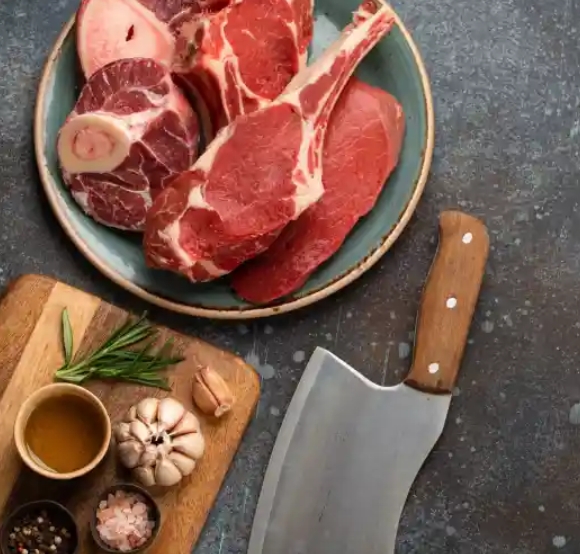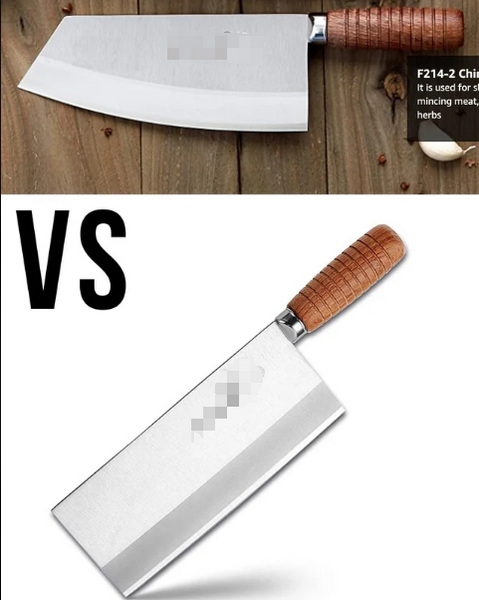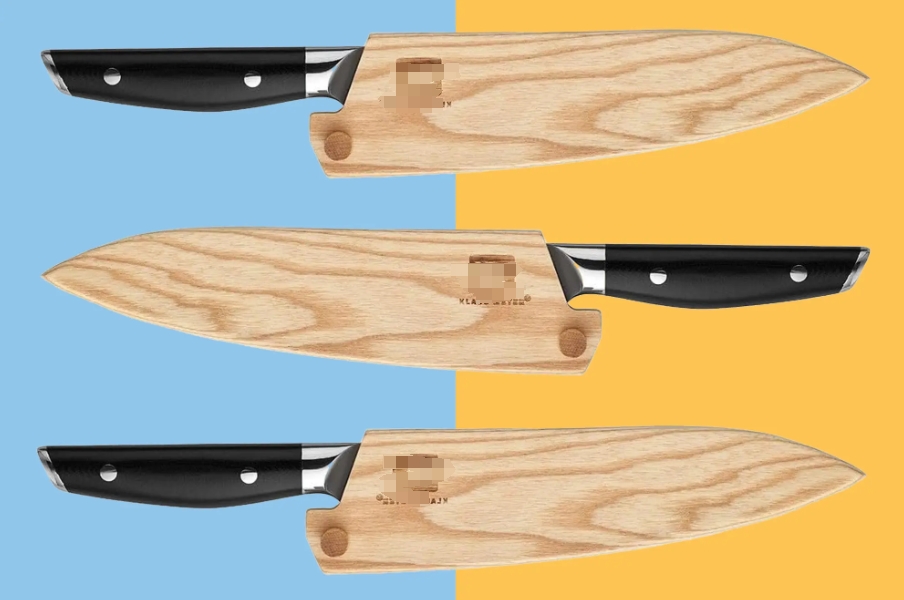

Views: 222 Author: Ella Publish Time: 2025-04-25 Origin: Site








Content Menu
● Understanding Different Types of Kitchen Knives
>> Paring Knife
>> Bread Knife
>> Boning Knife
>> Nakiri Knife
● How to Choose the Right Knife for Your Cooking Style
>> 1. Consider What You Cook Most Often
>> 2. Blade Material and Sharpness
● Essential Knife Skills for Your Kitchen
>> Video Guide: Essential Knife Skills Every Home Cook Must Know
● Visual Guide: Types of Kitchen Knives
● FAQ
>> 1. What is the most versatile kitchen knife for beginners?
>> 2. How do I maintain and sharpen my kitchen knives?
>> 3. What blade material is best for kitchen knives?
>> 4. How many knives do I really need in my kitchen?
>> 5. What knife size should I choose?
Choosing the right kitchen knife is essential for efficient, safe, and enjoyable cooking. With so many types of knives available, understanding their uses, designs, and how they fit your cooking style can transform your kitchen experience. This comprehensive guide will walk you through everything you need to know to select the perfect kitchen knife tailored to your culinary needs.

Kitchen knives are specialized tools designed for particular tasks. Selecting the right knife depends on your cooking habits and the types of food you prepare most often.
The chef's knife, also known as the Gyuto in Japanese style, is the most versatile knife in any kitchen, handling about 80-90% of cutting tasks. It features a broad, slightly curved blade ranging from 6 to 12 inches, with 8 inches being the most popular size for home cooks. Its design allows for rocking motions ideal for chopping, dicing, and slicing vegetables, meat, and herbs[2][6][8].
- Best for: Almost all kitchen tasks including chopping onions, slicing meat, and dicing vegetables.
- Blade: Triangular, pointed, slightly curved.
- Material: Often made from high-carbon stainless steel or laminated steel for durability and sharpness.
Originating in Japan, the Santoku knife means "three virtues," referring to its ability to handle vegetables, fish, and meat. It has a shorter, thinner blade than a chef's knife, usually 165-180mm long, with a flatter edge that excels at chopping, dicing, and mincing[6][10].
- Best for: Precision slicing, dicing, and mincing.
- Blade: Thinner and flatter than a chef's knife.
- Material: Typically high-carbon steel or stainless steel.
A small knife with a blade around 3-4 inches, perfect for intricate tasks like peeling, trimming, deveining shrimp, or making decorative garnishes[2][8][10].
- Best for: Peeling fruits, trimming, coring, and small precise cuts.
- Blade: Short, sharp, and pointed.
Characterized by a serrated edge designed to saw through tough crusts without crushing soft interiors. Ideal for bread, tomatoes, and other soft-skinned fruits[2][10].
- Best for: Slicing bread, tomatoes, and other soft or crusty foods.
- Blade: Long (around 9 inches), serrated.
A mid-sized knife between a paring and chef's knife, useful for slicing small fruits, vegetables, and meats when a chef's knife is too large[2][8][16].
- Best for: Versatile everyday tasks.
- Blade: Smaller than chef's knife, larger than paring knife.
A narrow, flexible blade designed for removing bones from meat and poultry, also useful for trimming fat and precise cutting of vegetables and fruits[2][11].
- Best for: Deboning and trimming.
A Japanese-style knife with a straight edge designed specifically for chopping vegetables. Its flat blade makes it excellent for julienne, brunoise, or allumette cuts[3].
- Best for: Vegetable prep and chopping.

- Home cooks preparing a variety of dishes: A high-quality chef's knife or Gyuto is essential as it covers most tasks.
- Vegetable-heavy cooking: Consider a Nakiri or Santoku knife for efficient chopping.
- Baking enthusiasts: A serrated bread knife is indispensable.
- Meat-focused cooking: Add a boning knife or carving knife for precision.
- High-carbon stainless steel offers a good balance of sharpness, durability, and rust resistance.
- Damascus steel knives are layered for strength and aesthetic appeal, maintaining sharpness longer[13][14].
- Blade hardness (HRC rating): A rating of 56+ is ideal for kitchen knives to ensure durability and edge retention[14].
- The blade length should feel comfortable and balanced in your hand.
- An 8-inch chef's knife is a popular size for versatility.
- Heavier knives are better for tough vegetables; lighter knives offer more precision[12][15].
- Ergonomic handles reduce hand fatigue and improve control.
- Materials vary from wood to synthetic composites; choose one that feels secure and comfortable[13][15].
- Choose knives that are easy to sharpen and maintain.
- Regular honing and occasional sharpening with a whetstone will keep your knives performing well[9].
- Store knives safely in blocks or on magnetic strips to protect the blade[9].
Learning proper knife techniques enhances safety and efficiency. Here are some basics:
- Grip: Hold the knife with your thumb and forefinger pinching the blade, handle resting in your other fingers.
- Guide hand: Curl your fingers inward (claw grip) to protect fingertips while cutting.
- Cutting motion: Use a rocking motion for chef's knives; a back-and-forth sawing motion for serrated knives like bread knives[4][7].
Watch this tutorial by a former fine dining chef demonstrating how to hold and use an 8-inch chef's knife safely and effectively, including chopping onions and other common ingredients[4].
| Knife Type | Image Description | Typical Use |
|---|---|---|
| Chef's Knife | Broad, curved blade with pointed tip | Versatile chopping and slicing |
| Santoku Knife | Shorter, flatter blade with a rounded tip | Dicing, mincing, slicing |
| Paring Knife | Small, pointed blade | Peeling, trimming, precision |
| Bread Knife | Long serrated blade | Slicing bread and soft fruits |
| Boning Knife | Narrow, flexible blade | Deboning meat and poultry |
| Nakiri Knife | Straight-edged, rectangular blade | Vegetable chopping |
Choosing the best kitchen knife for your cooking style involves understanding the types of knives available and matching them to your culinary needs. A versatile chef's knife or Gyuto is the cornerstone of any kitchen, while specialized knives like Santoku, Nakiri, or bread knives enhance specific tasks. Consider blade material, size, handle comfort, and maintenance when making your choice. Coupled with proper knife skills, the right knife will make cooking safer, more efficient, and more enjoyable.

The chef's knife (Gyuto) is the most versatile and essential knife for beginners, capable of handling most kitchen tasks from chopping to slicing[2][12].
Regular honing keeps the blade aligned and should be done every few uses. Sharpening with a whetstone a few times a year restores the edge. Always dry knives immediately after washing and store them properly to prevent damage[9].
High-carbon stainless steel is preferred for its balance of sharpness, durability, and rust resistance. Damascus steel offers superior sharpness retention and aesthetic appeal but may require more care[13][14].
For most home cooks, a basic set includes a chef's knife, paring knife, and bread knife. Additional knives like utility, boning, or Santoku can be added based on cooking style[1][8].
Blade length depends on comfort and use. An 8-inch chef's knife is ideal for most tasks and hand sizes. Smaller knives are better for precision work, while larger knives handle heavy-duty tasks better[12][15].
[1] https://www.johnlewis.com/buying-guides/kitchen-knives-buying-guide
[2] https://madeincookware.com/blogs/types-of-kitchen-knives
[3] https://thesharpchef.co.uk/pages/knife-types
[4] https://www.youtube.com/watch?v=-al-bs737fw
[5] https://www.japanesefoodreport.com/posts/videos-japanese-knife-skills
[6] https://sharpedgeshop.com/blogs/knives-101/types-of-japanese-kitchen-knives
[7] https://www.youtube.com/watch?v=Ydc_SaQ_eRQ
[8] https://www.souschef.co.uk/blogs/the-bureau-of-taste/the-complete-guide-to-kitchen-knives
[9] https://www.souschef.co.uk/blogs/the-bureau-of-taste/how-to-care-for-your-kitchen-knife
[10] https://www.goodhousekeeping.com/uk/product-reviews/house-garden/g32205000/best-kitchen-knives/
[11] https://stahlkitchens.com/blogs/news/types-of-knives
[12] https://elementknife.com/pages/common-questions-about-kitchen-knives
[13] https://heinnie.com/blog/kitchen-knife-set/
[14] https://sharpedgeshop.com/blogs/knives-101/how-to-choose-a-kitchen-knife
[15] https://www.deerandoak.co.uk/blogs/news/selecting-a-good-kitchen-knife-expert-tips
[16] https://www.lakeland.co.uk/info/knife-guide
[17] https://www.seriouseats.com/the-best-essential-knives
[18] https://www.cordonbleu.edu/london/chef-knife/en
[19] https://www.nytimes.com/wirecutter/reviews/the-best-chefs-knife-for-most-cooks/
[20] https://www.souschef.co.uk/blogs/the-bureau-of-taste/the-complete-guide-to-kitchen-knives
[21] https://www.bbcgoodfood.com/howto/guide/know-your-knives-expert-guide-knife-types-and-how-use-them
[22] https://www.blackmoorhome.co.uk/blog/a-guide-to-different-types-of-kitchen-knives/
[23] https://sharpedgeshop.com/blogs/knives-101/how-to-choose-a-kitchen-knife
[24] https://www.kitchenkapers.com/pages/how-to-choose-kitchen-knives
[25] https://www.telegraph.co.uk/recommended/home/kitchen/best-chefs-knives/
[26] https://www.carawayhome.com/blog/types-of-kitchen-knives
[27] https://www.seriouseats.com/the-best-chefs-knives
[28] https://www.reddit.com/r/cookingforbeginners/comments/1781thp/knife_buying_guide/
[29] https://stock.adobe.com/search?k=chef+knife
[30] https://unsplash.com/s/photos/chef-knife
[31] https://www.youtube.com/watch?v=YrHpeEwk_-U
[32] https://www.youtube.com/watch?v=TGuoE7EBEHU
[33] https://madeincookware.com/blogs/types-of-kitchen-knives
[34] https://www.youtube.com/watch?v=G-Fg7l7G1zw
[35] https://www.gettyimages.co.uk/photos/kitchen-knife
[36] https://www.youtube.com/watch?v=QgVyN6Lpiuc
[37] https://www.youtube.com/watch?v=yJ44SxiemMs
[38] https://www.kitchenknives.co.uk/know-how/blog/different-types-of-kitchen-knife/
[39] https://www.youtube.com/watch?v=20gwf7YttQM
[40] https://www.etsy.com/uk/listing/596565322/kitchen-knives-various-types-of-chefs
[41] https://www.kitchenknives.co.uk/faqs
[42] https://www.ikea.com/gb/en/rooms/dining/knife-guide-choose-the-right-knife-for-your-kitchen-tasks-pub3cb4555b/
[43] https://theknifestore.co.uk/pages/frequently-asked-questions-about-knives
[44] https://www.bbcgoodfood.com/howto/guide/know-your-knives-expert-guide-knife-types-and-how-use-them/
[45] https://northernknife.com/blogs/blogs/the-essential-guide-to-maintaining-your-knife
[46] https://aolcookshop.co.uk/pages/kitchen-knife-buying-guide
[47] https://www.divertimenti.co.uk/blogs/the-cookery-edit/common-knife-questions
[48] https://www.knivesandtools.co.uk/en/ct/buying-guide-knife-sets.htm
[49] https://www.johnlewis.com/buying-guides/kitchen-knives-buying-guide
[50] https://www.zwilling.com/uk/magazine/product-guide-knives/knife-use-care.html
[51] https://www.istockphoto.com/photos/kitchen-knife
[52] https://www.istockphoto.com/illustrations/chef-knife
[53] https://www.vecteezy.com/free-vector/kitchen-knife
[54] https://www.lakeland.co.uk/in-the-kitchen/cutting-and-chopping/knives
[55] https://circulon.uk.com/blogs/the-culinary-circle/what-you-need-to-know-when-buying-kitchen-knives
[56] https://charlottepike.substack.com/p/a-guide-to-buying-kitchen-knives
[57] https://sharpedgeshop.com/blogs/knives-101/guide-maintenance-of-kitchen-knives